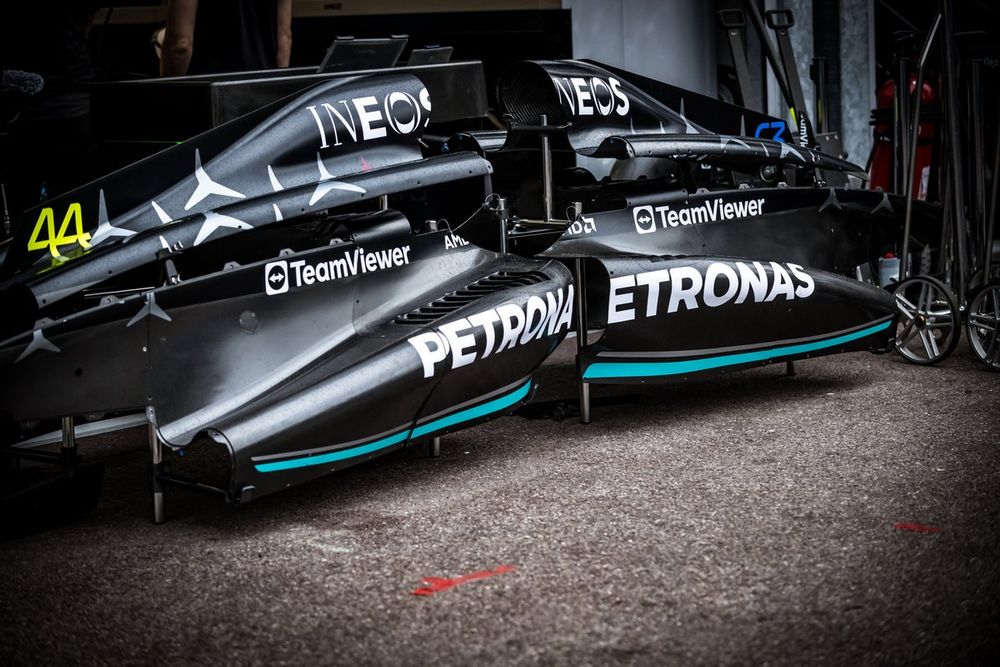
After a disappointing start to the season with its new W14 challenger, Mercedes has been working hard at its Brackley factory on a raft of changes to the car.
As well as seeking overall downforce gains with the latest developments, Mercedes has been eager to deliver a more consistent and stable platform for its drivers.
That is why beyond the obvious visual changes to the sidepods, there have also been tweaks to the front suspension and floor.
As part of F1's regulations, teams have to notify the FIA of any technical changes made to their cars, as well as explain the thinking behind modifications.
Ahead of the Monaco GP, Mercedes duly told the FIA of six key revisions it has made to its car, and the reasons for them.
The changes are:
Front suspension: The top wishbone forward leg inboard pick-up has been lifted. This change results in improved positioning of wishbone wake, which in turn improves onset flow into the sidepod, therefore improving cooling performance.

Floor Fences: There has been a local load change in fence camber, which results in an increased local load and improved flow to the diffuser. This should deliver more rear downforce.

Sidepod inlet: A wide and high sidepod inlet helps improve flow to the floor edge, which results in more floor load and also improved flow to the rear corner.

Sidepods and bodywork: The increased bodywork width increases local downforce and also improves the flow to the rear wing assembly and rear corner.

Rear wing: The increased camber of the rear wing flap results in increased rear wing load, which in turn drops the pressure behind the car - thereby increasing rear floor load.

Rear brake duct winglets: A second cascade of cake-tin winglets added to the additional winglet array adds local winglet load. This also drops the pressure behind the lower suspension legs, increasing load on these too.








